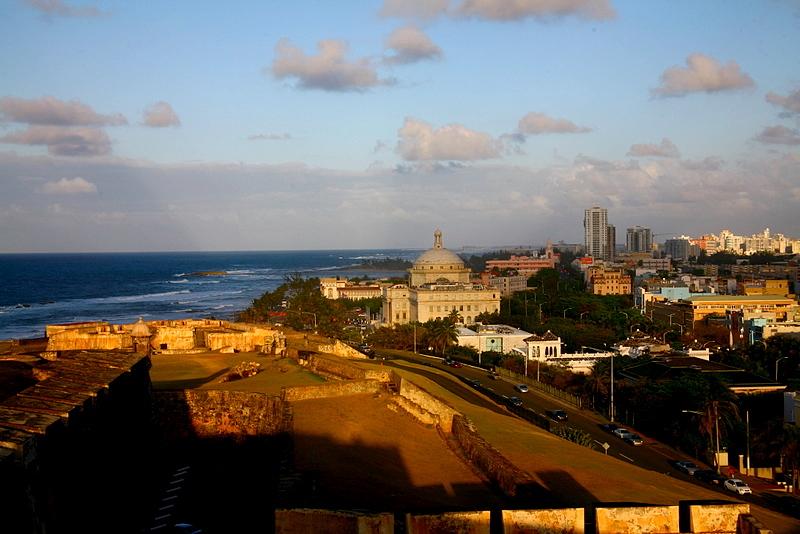(单词翻译:单击)
听力文本
This is Scientific American — 60-Second Science. I'm Julia Rosen.
Got a minute?
Ninety-nine years ago, a magnitude 7.3 earthquake hit Puerto Rico. It also caused a tsunami that swept through coastal towns. All told, the shaking and flooding killed more than 100 people and damaged many buildings and roads. Now, scientists are getting a clearer picture of the tragic event thanks to an unexpected source: century-old documents unearthed in an archive in the capital city of San Juan.
The documents were discovered by Bill McCann, a seismologist and former professor at the University of Puerto Rico. McCann stumbled upon boxes of repair petitions filed by residents of what was then a newly acquired U.S. territory, asking for aid after the disaster. He later mentioned them to Roland LaForge, another semi-retired seismologist, who told me why he wanted to rescue the records:
"They're just sitting there getting moldy, and nobody's ever looked at them. There might be some really useful information in there."

So the two researchers analyzed more than 6000 documents. Which turned out to be a gold mine of information about the disaster and the damage it caused, on a house-by-house basis.
"They're very sad and pointed at times, because people lost family members. Some people drowned and they never found their bodies. You got a real feel for the suffering that these people went through."
In a newly published study based on the records, the researchers focused on the town of Aguadilla, which sat closest to the epicenter. They found that the worst earthquake damage happened where the ground was sandy or swampy, and confirmed earlier estimates that the tsunami rose between three and four meters high, inundating low-lying neighborhoods. LaForge says these data will help local authorities plan for future quakes.
"It's very important to look at these historic earthquakes and learn as much as you can from them because our knowledge and our history of earthquakes is very, very short."
The work is published in the journal Seismological Research Letters.
The 1918 event was the most recent major earthquake to hit Puerto Rico, and the only one for which any written records exist. But LaForge says it's only a matter of time before the island experiences another. It sits on its own tiny plate, squeezed between the North American and Caribbean plates and surrounded on all sides by faults. LaForge has estimated that it could be a few thousand years before the fault that caused the 1918 disaster breaks again. But that's what he calls a WAG—"you know, a wild-ass guess." Besides, there are many other faults just like it that could go.
"If a repeat of that type of earthquake happened next week, nobody would be surprised."
Thanks for listening for Scientific American — 60-Second Science Science. I'm Julia Rosen.
参考译文
这里是科学美国人——60秒科学。我是朱莉娅·罗森。
有一分钟时间吗?
99年前,波多黎各发生了7.3级大地震。那场地震引发的海啸席卷了沿岸城镇。地震和洪水共造成100多人死亡,另有许多建筑物和道路遭到破坏。现在,科学家们对那起悲剧事件有了更清晰的了解,这要归功于一个意想不到的来源:在首都圣胡安市一家档案馆发掘的一个世纪以前的文件。
发现这些文件的是地震学家、前波多黎各大学教授比尔·麦肯。麦肯偶然发现了数盒由美国新获领土的居民提交的重建请愿书,他们在请愿书中请求灾后救援。随后,他跟另一位半退休的地震学家罗兰·拉夫日提到了这些请愿书,拉夫日告诉了我他想拯救这些记录的原因:
“这些文件被扔在那里慢慢发霉,没有人看过。而那里面可能有一些非常有用的信息。”
因此,两位研究人员对6000多份文件进行了分析。结果表明,这些文件是关于那场灾难及损失情况的信息宝库,而且数据是由当地各户居民所提供的。
“有些文件令人悲伤而且尖锐,因为人们失去了家人。有些人溺亡了,而且连尸体都没找到。你会对这些人所经历的苦难有真切的感受。”
在最新发表的一项以这些记录为基础的研究中,研究人员将注意力集中在距离震中最近的阿瓜迪亚镇。他们发现,沙质或沼泽地在地震中遭受的破坏最严重,这同时证实了此前的判断:海啸上升到3至4米高,淹没了地势低洼的居民区。拉夫日表示,这些数据将帮助当地政府做好地震预防工作。
“研究这些历史上的地震并尽可能地去获取地震信息对我们来说非常重要,因为我们了解的地震知识和地震历史太少了。”
这项研究发表在《地震学研究快报》上。
1918年那场大地震是波多黎各最近遭遇的一次大地震,也是唯一留有书面记录的地震。但拉夫日表示,波多黎各再次遭遇地震只是时间问题。因为波多黎各坐落在自己的小板块上,挤在北美板块和加勒比板块中间,四周被断层包围。拉夫日估计,导致1918年地震的断层可能几千年以后会再次断裂。不过他称之为WAG,也就是“瞎猜”。另外,那里还有许多可能引发地震的类似断层。
“即使下周就再发生一次那样的大地震,也没有人会感到惊讶。”
谢谢大家收听科学美国人——60秒科学。我是朱莉娅·罗森。
译文为可可英语翻译,未经授权请勿转载!
重点讲解
重点讲解:
1. all told 总共;合计;总之;
例句:All told there were 104 people on the payroll.
在职的总共有 104 人。
2. thanks to 幸亏;归因于;
例句:Painful typhoid injections are a thing of the past, thanks to the introduction of an oral vaccine.
自从发明了口服疫苗后,令人痛苦的伤寒疫苗注射就成为了过去。
3. stumble upon 意外发现;偶然看见;
例句:He was digging in the garden and stumbled upon a gold coin.
他在花园里挖土时,偶然发现一块金币。
4. go through 经历,经受(尤指苦难或艰难时期);
例句:Their marriage has been going through a bad patch.
他们的婚姻正处在困难时期。


